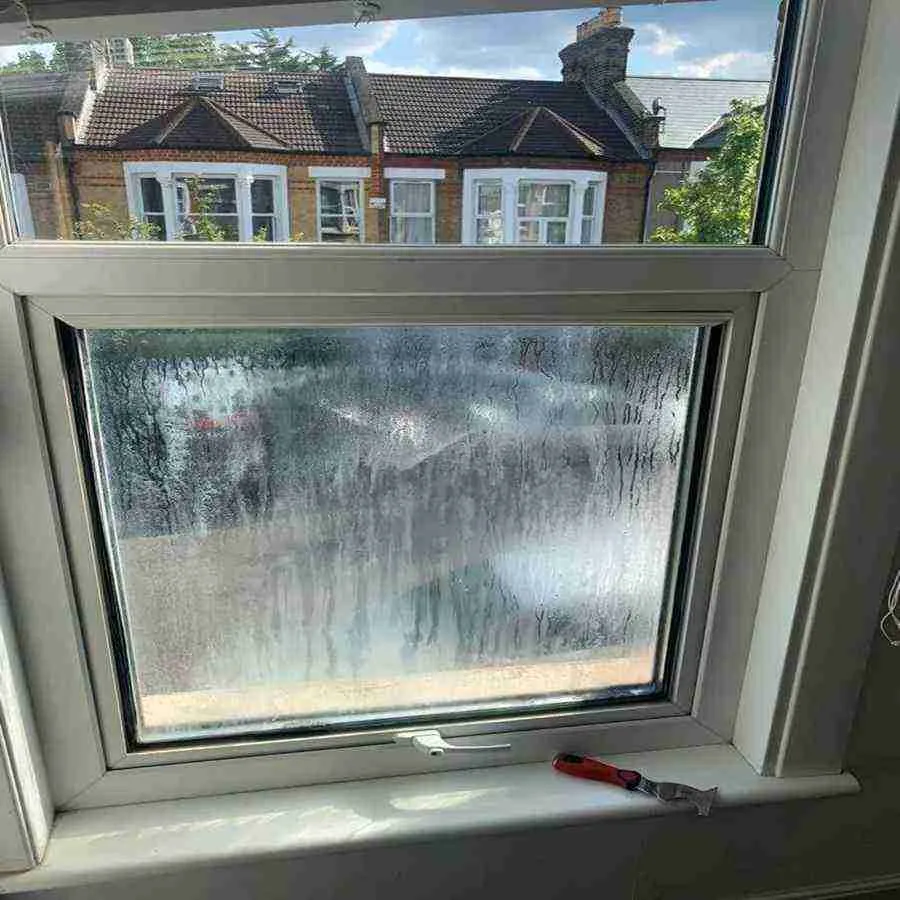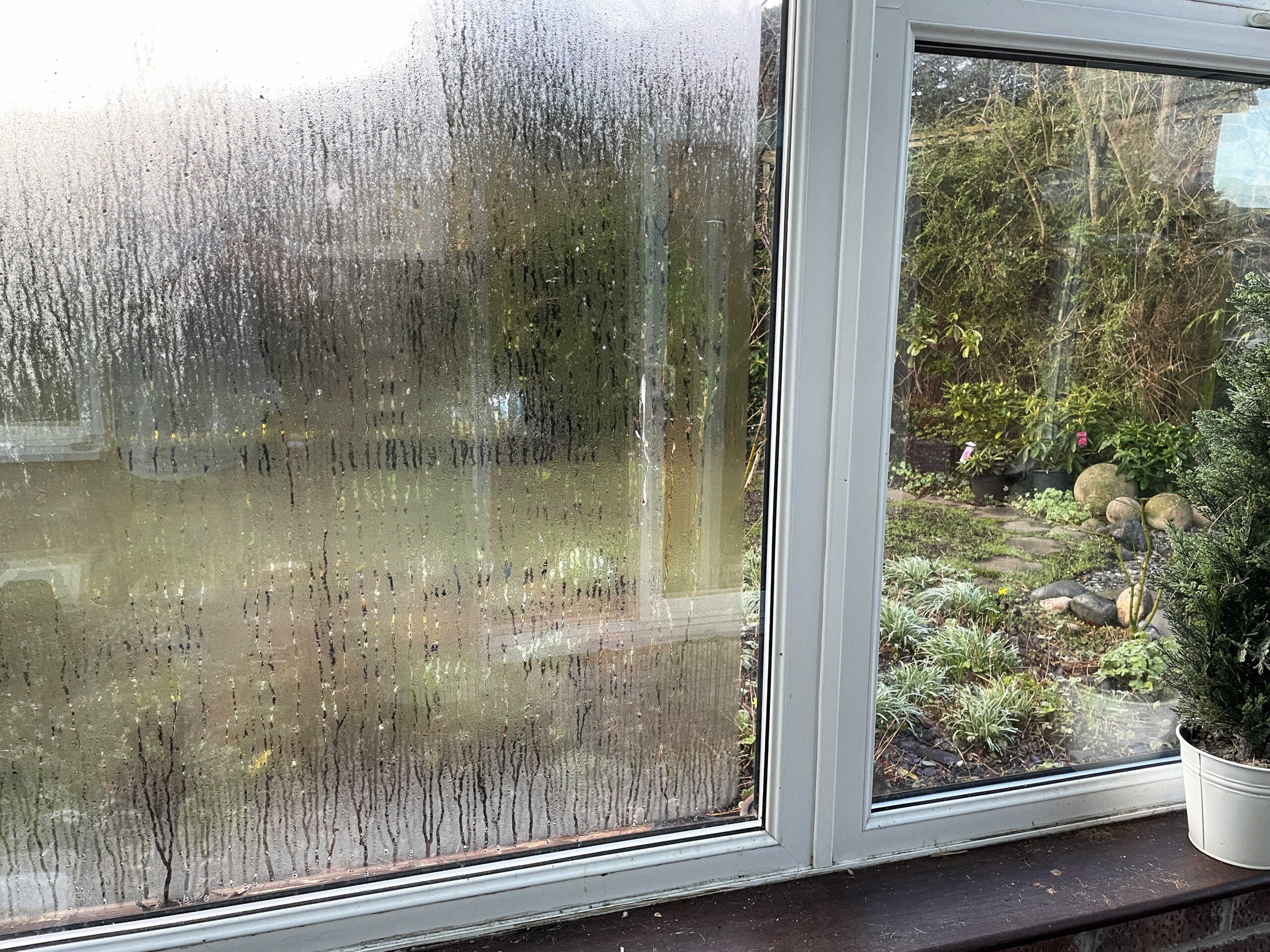Inside the Fog: Understanding Condensation Between Glass Panes
Have you noticed mist or water droplets forming between the panes of your double glazed windows? While it may seem like a minor inconvenience, condensation between glass panes is a clear sign that your glazing unit has failed. Not only does it reduce visibility and aesthetic appeal, but it also compromises your home's insulation and energy efficiency.
In this guide, we explore why condensation occurs between glass panes, what causes it, and the most effective ways to deal with it. If you’re looking to improve your windows' performance and appearance, understanding this issue is the first step.

Misted Double Glazing

Condensation Inside Window
What Causes Condensation Between Window Panes?
Double and triple glazed windows are made up of two or more panes of glass separated by a sealed air or gas-filled space. This sealed space acts as insulation, helping to regulate indoor temperatures and reduce noise.
However, over time, the seal around the glass unit can degrade due to temperature fluctuations, moisture exposure, or simple aging. When the seal fails, moisture from the outside environment seeps into the space between the panes. This moisture then condenses when temperatures drop, leading to the foggy or misted appearance that many homeowners find familiar.
How to Identify a Failed Sealed Unit
Condensation on the inside or outside surface of your windows is generally normal and temporary. It usually happens when there’s a temperature difference between the glass and the surrounding air.
However, if you notice condensation between the panes of glass—trapped inside the unit—this means the seal has failed and the glazing unit is no longer airtight. Common signs of failed double glazing include:
- Mist or fog between the glass layers that cannot be wiped away
- Visible water droplets inside the sealed unit
- A general hazy appearance across the window
Why Seal Failure Matters
When a window seal fails, your glazing unit loses its insulating properties. This not only affects visibility but also reduces your home’s energy efficiency. Warm air can escape more easily, and cold air can seep in, resulting in higher heating bills and reduced comfort.
In addition, moisture trapped inside your windows can lead to further problems, such as mould growth, frame deterioration, and overall structural wear. That’s why it’s important to address condensation between panes promptly.
Repairing vs Replacing Misty Windows
If you’re dealing with condensation between your window panes, there are two primary options: defogging the unit or replacing the sealed glass unit.
1. Defogging the Unit
Some companies offer a defogging service, which involves drilling small holes in the glass, extracting the moisture, and resealing the unit. While this can offer a short-term improvement in visibility, it does not restore the original thermal performance or insulating gas. Defogging is typically less reliable and not a long-term solution.
2. Replacing the Insulated Glass Unit (IGU)
The most effective and permanent solution is to replace the failed IGU. If the window frames are still in good condition, you can replace just the glass unit without changing the entire window. This restores both clarity and thermal performance, ensuring your windows continue to function as intended.
When Should You Replace the Entire Window?
While replacing the glass unit is often sufficient, there are situations where a full window replacement is more appropriate:
- The window frame is damaged, rotten, or warped
- The unit is very old and lacks modern insulation features
- You’re looking to upgrade to more energy-efficient glazing (e.g. low-E or triple glazing)
Modern double glazed units often come with features such as argon gas, warm-edge spacers, and advanced low-E coatings, which can significantly improve energy efficiency and durability.
Preventing Future Condensation Between Panes
To reduce the risk of future seal failures and misty windows, consider the following tips:
- Choose high-quality windows from reputable manufacturers
- Ensure your windows are installed by experienced professionals
- Perform routine maintenance, including checking seals and drainage holes
- Opt for energy-efficient glazing with protective coatings and gas fills
While no window is completely immune to wear and tear, these practices can greatly extend the life of your double glazing.
Need Help with Foggy Windows?
If you’ve noticed condensation inside your double glazed windows, it’s best to speak to a glazing professional. Replacing the glass unit will not only restore your view but also help improve your home's energy efficiency and prevent further issues down the line.













Great post! Glazing is such an important aspect of both aesthetics and energy efficiency in modern buildings. It’s amazing how the right glass choices can completely transform a space while also improving insulation and reducing noise. Thanks for sharing!